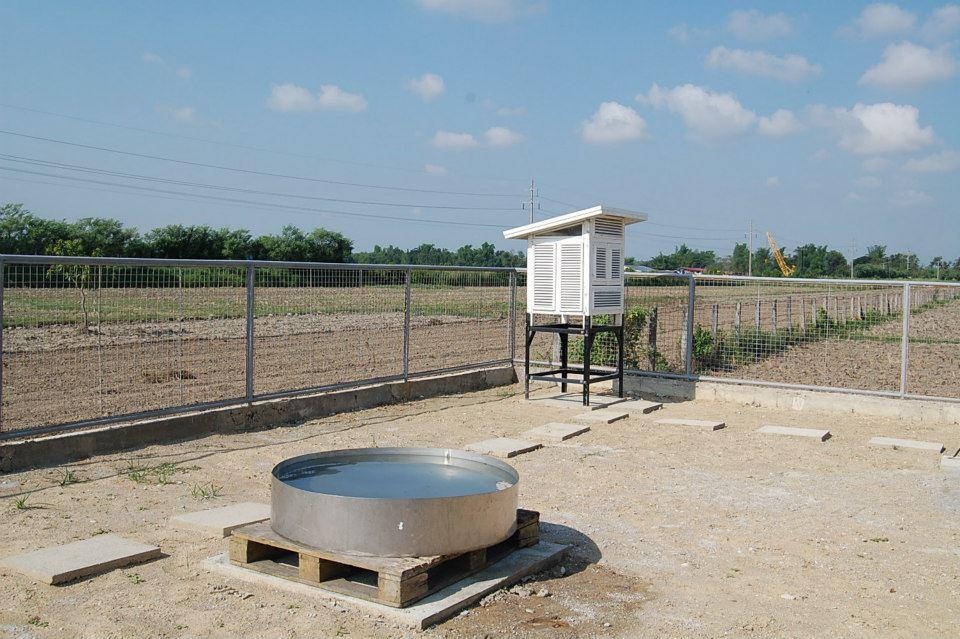Steps toward independent climate financing in the PHL
It was only in 2010 that the Rice Watch and Action Network (R1) launched the country’s first two Climate Resilience Field Schools (CRFS). It wasn’t even part of their original plan, but seven years later, the CRFS has become R1’s flagship program, making it one of the leading authorities in protecting agriculture against the effects of climate change.
Think of it as a farmer’s laboratory. In a season-long learning program, typically lasting three to four months, farmers are given the opportunity to learn risk management and sustainable farming strategies through experimentation and experience.
“In one demo farm, for example, the farmers tried five different rice varieties including the traditional ones. At the end of the season, they were able to compare the varieties in terms of weight, number of tillers, and yield,” said R1 executive director Hazel Tanchuling.
To augment the field school, R1 also supports local government units (LGUs), enabling them to provide localized climate services such as short- and long-term weather observations, risk management advice, and disaster thresholds.
With access to all this information, farmers can apply their field school learnings to plan around the potential impacts. “That’s what really makes a community resilient,” Tanchuling said.

The aim of the CRFS program is LGU independence, which means complete inclusion in its budget. “We estimate three to five years before the LGUs have complete mastery over the system. Even the farmers need at least six planting seasons,” said Tanchuling.
Until then, R1 will have to help prop up an otherwise solid system for climate change preparedness. For an organization that has hardly any government support, this takes a really heavy toll on their operations.
Global climate finance
The adoption of the 1992 United Nations Framework Convention on Climate Change (UNFCCC) led to intensified cash flows to climate finance. As of May 2017, a grand worldwide total of at least $29 billion has been pledged as climate money, about $21 billion of which having been deposited.
Among individual countries, India, Morocco, and Brazil have received the largest amounts of climate money. The Philippines, with an approved $164 million, ranks 21st, placing considerably higher than other developing countries such as Ethiopia, Rwanda, and Myanmar.
The money is contained mostly in different multilateral funds, the largest of which is the Green Climate Fund (GCF), with almost $10.3 billion in pledges.
Although with nuances, the overarching objective of these funds is to channel money into promising climate change mitigation and adaptation measures. Those like the CRFS are prime examples.
“We didn’t try for the big climate funds because it’s not easy to get support from those,” said Tanchuling. “Unless you’re a big, accredited multilateral agency, you can’t go directly to the GCF.”
In their 2010 report “Financing Adaptation or Funding Chaos?,” the Institute for Climate and Sustainable Cities (ICSC) outlined the challenges and issues with international climate funding.
Principal among these is that decisions are made with very little to no input from the recipients. In most cases, power and influence is concentrated among the largest donor countries, leaving the supposed beneficiaries removed from the process.
“The problem with external fund sources,” said Kairos Dela Cruz, associate for Climate Policy at the ICSC, “is that they are too far from the local situation. We can’t make the most out of the money.”
The key, the report continues, is financial independence: the Philippines should create reliable and robust domestic financial mechanisms to fund its own climate change programs.
“It cannot and should not wait for developed country climate largesse before it takes urgent and enduring climate action,” said the ICSC report.

The People’s Survival Fund
Born out of this recommendation, and out of the Climate Change Act of 2009, is the People’s Survival Fund (PSF), a special appropriation under the national budget.
The Fund, currently at its floor value of P1 billion per year, is a 100-percent grant facility solely for climate change adaptation initiatives.
Importantly, the Fund has a clear potential for growth. It can accept contributions and endowments from third-party partners and donors. The government can also increase allotment according to demonstrable demand.
Demand also determines the Fund’s outflow: “The PSF is not a superfund; it’s a rewards fund. It incentivizes the level of [proactivity] of LGUs to spend a bit of time and resources in coming up with the proper proposal,” said Kairos.
“[But] as long as you have a proper plan [and a] solid vulnerability assessment that supports [it], you have a high chance of getting approved,” he added.
The Fund was first operationalized in late 2015, with the first call for proposals posted in October of the same year. However, since then, and as of writing, only four proposals have been approved and not a single peso has been disbursed.
Kairos believes that trying to fit such an innovative funding mechanism into an “old—tested but really old—process of budgeting” has resulted in countless snags and delays in the disbursement process.
Despite this, the Fund still presents a strong case for domestic climate financing. One of the pipeline projects pending final approval is a CRFS expansion in Gerona, Tarlac. Because funds are limited, over the past seven years, the CRFS has been run in only 14 of its 44 barangays.
The PSF support will fast-track the CRFS implementation in the remaining 30 barangays and will enhance the local services to include warnings for climate-related health risks. According to Tanchuling, almost P39 million has been earmarked for this project.
The objective of the Fund, Kairos said, is to eliminate the need for it. For that to happen, it needs to spark permanent change in the budget process.
“Climate change is something relatively new in the planning process, but it will be there forever,” Kairos said. “Maybe that’s what PSF can help with in the long run: more responsive budgeting. The ultimate goal is that the budget is already responsive enough to deal with climate change.” — BM, GMA News



